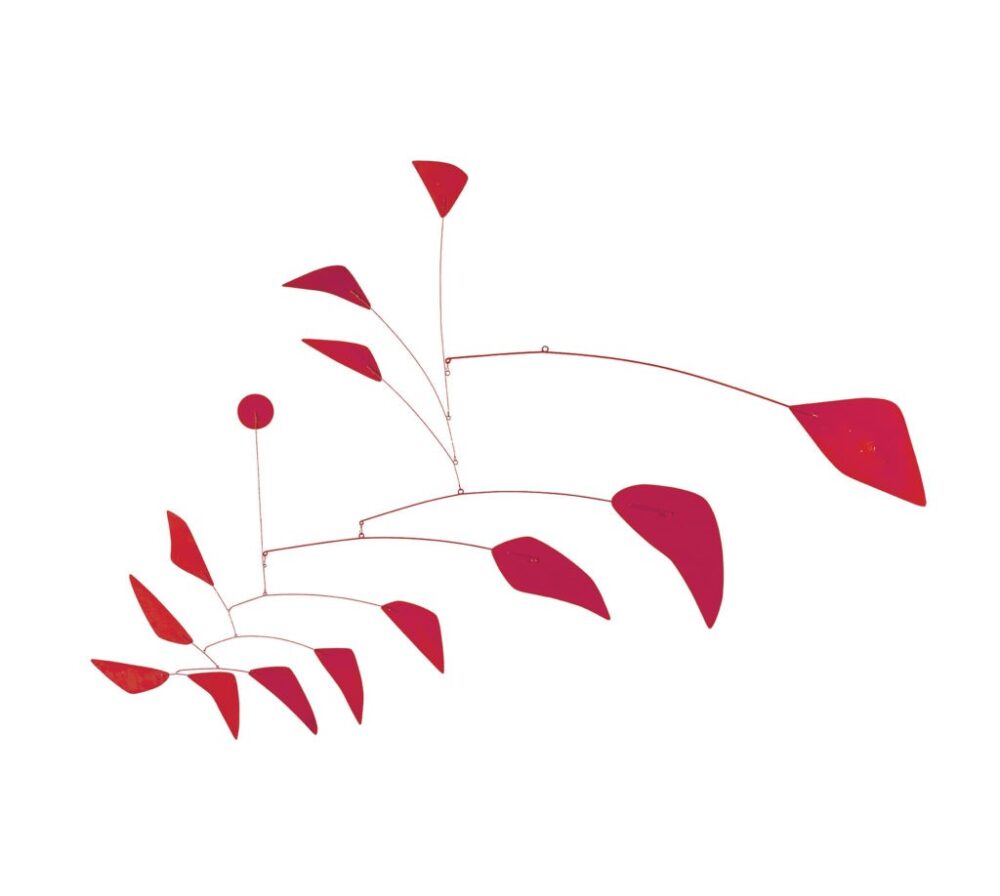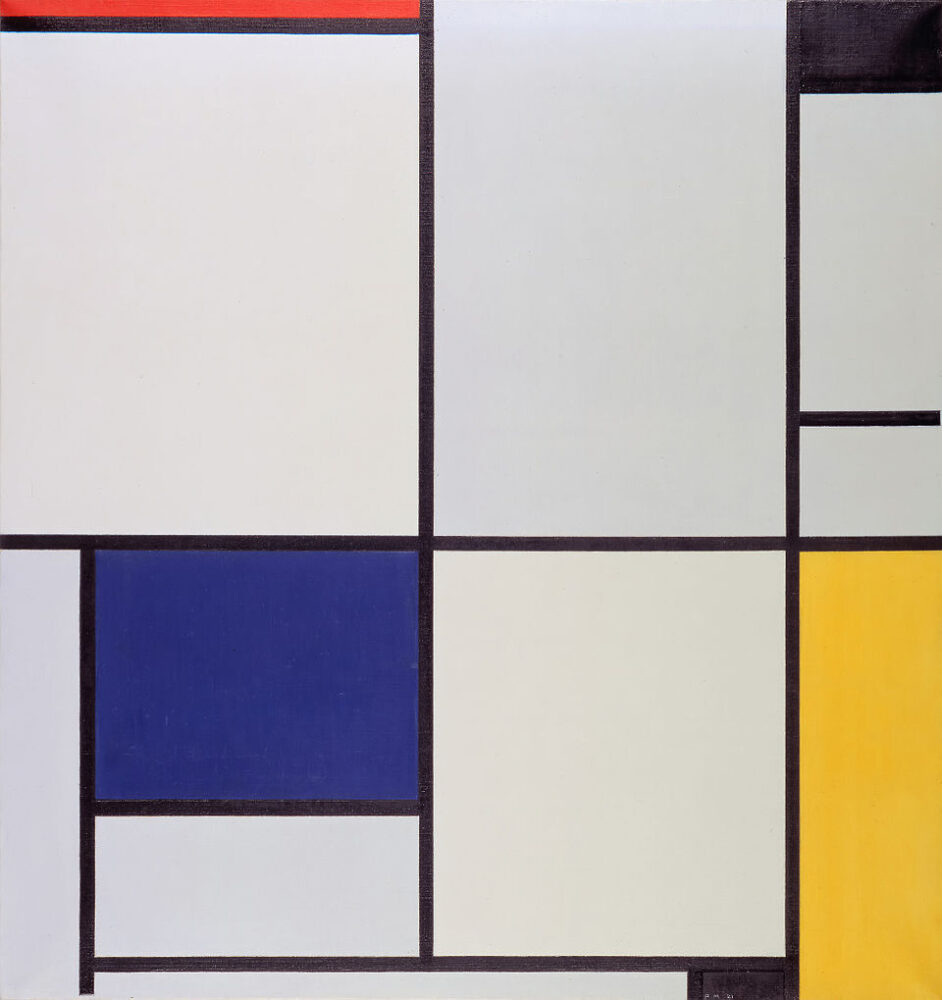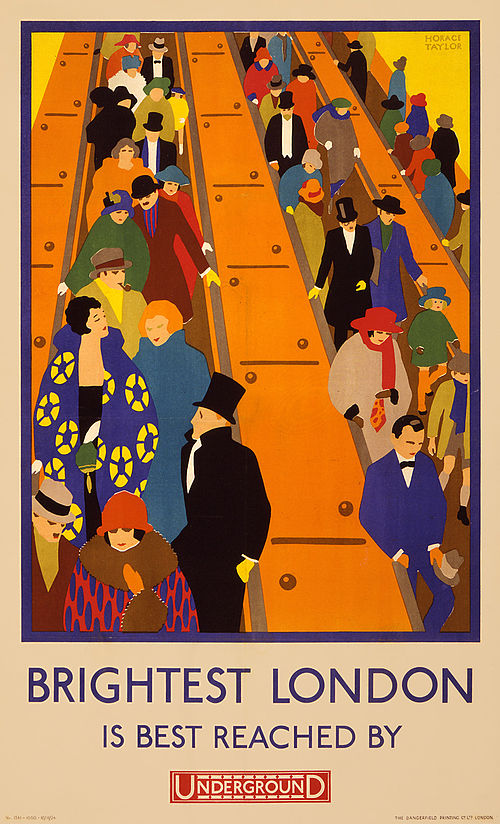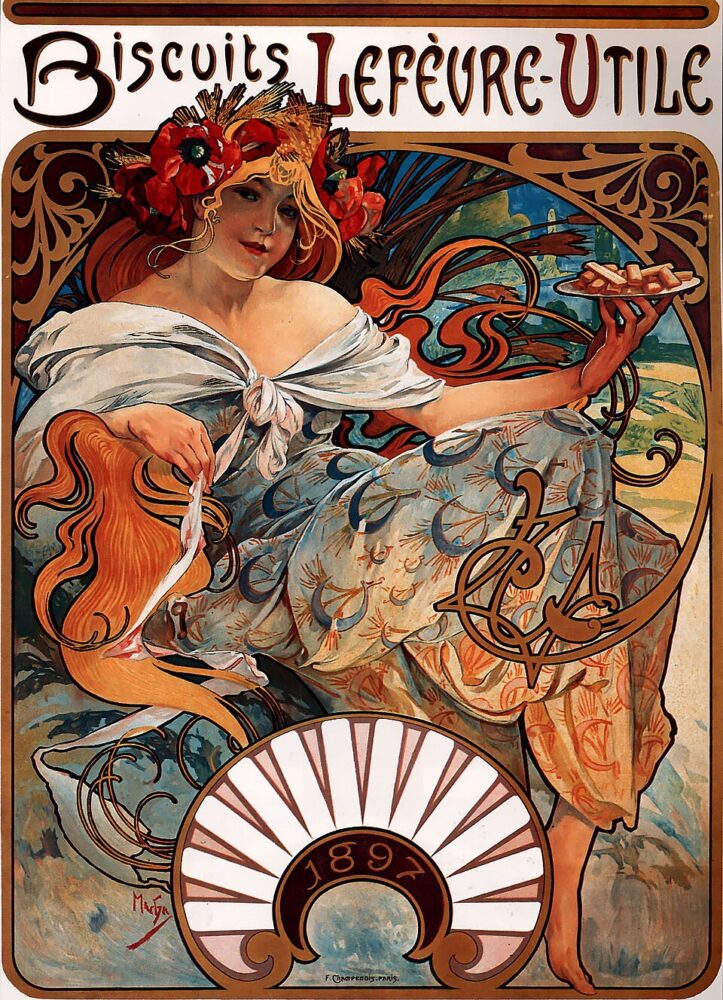Main Project Inspiration and Art Nouveau
For my main project I will be creating a Mobile in the Art Nouveau Aesthetic. My main inspiration for this project is the work of Alexander Calder, who pioneered the mobile as a form of kinetic sculpture. “Taking inspiration from the unruly aspects of the natural world, Art Nouveau influenced art and architecture especially in the applied arts, graphic work, and illustration. Sinuous lines and “whiplash” curves were derived, in part, from botanical studies and illustrations of deep-sea organisms. [Art Nouveau] advocated nature as the primary source of inspiration for a generation of artists seeking to break away from past styles. The unfolding of Art Nouveau’s flowing line may be understood as a metaphor for the freedom and release sought by its practitioners and admirers from the weight of artistic tradition and critical expectations.” (Gontar). Two images are shown below. The first is one of Alexander Calder’s more famous mobiles Big Red. The second is a Tiffany Lamp, an excellent example of the Art Nouveau Aesthetic.


Opposite Aesthetic: De Stijl
Both an opposite to the Art Nouveau aesthetic and major inspiration for Calder’s own work, De Stijl was a Dutch Art Movement based on the theory of Neoplasticism. Formalized by Piet Mondrian, Neoplasticism “was in fact an ideal art in which the basic elements of painting – color, line, form – were used only in their purest, most fundamental state: only primary colors and non-colors, only squares and rectangles, only straight and horizontal or vertical lines” (TATE). This is in almost direct opposition to the “sinuous lines and ‘whiplash’ curves” (Gontar) that help define the Art Nouveau movement. Shown below is one of Mondrian’s works Tableau I that embodies the ideals of Neoplasticism . As well, another of Calder’s mobiles Untitled (c. 1939) that clearly reflects the influence this movement had on his own work through it’s use of primary colors and basic geometric shapes.


Opposite Aesthetic: Art Deco
While these two movements were contemporary, they focused on very different ideals. “Where Art Nouveau celebrates elegant curves and long lines, Art Deco consists of sharp angles and geometrical shapes” (Martin). This quote describes the difference quite well. While both movements enjoyed use of heavy ornamentation to achieve a feeling of opulence, Art Deco does this through sharp angular and strong patterns, giving way to an industrious feeling, Art Nouveau accomplished a more ethereal feeling through use of natural curves. Shown below are two advertisements in either style. On the left we can see the influence of Art Deco in the bold colors and sharp lines. Compare this to the more pastel shades and flowing lines of the Art Nouveau piece on the right.


Sources:
Gontar, Cybele. “Art Nouveau.” Timeline of Art History, The Metropolitan Museum of Art, 1 October 2006, https://www.metmuseum.org/essays/art-nouveau. Accessed 16 March 2025.
TATE. “Neo-plasticism.” Tate, https://www.tate.org.uk/art/art-terms/n/neo-plasticism. Accessed 15 April 2025.
Martin, Tatty. “Art Guides | Art Movements, Art Styling, Featured Artists, How To.” Art Guides | Art Movements, Art Styling, Featured Artists, How To | Rise Art, https://www.riseart.com/guide/2379/art-deco-vs-art-nouveau. Accessed 15 April 2025.
Images (in order of appearance):
[0]By Piet Mondrian – Transferred from en.wikipedia to Commons., Public Domain, https://commons.wikimedia.org/w/index.php?curid=37643395 [1]Big Red, Calder Foundation. “Archive.” Calder Foundation, https://calder.org/archive/all/works/. [2] I, Sailko, CC BY-SA 3.0, https://commons.wikimedia.org/w/index.php?curid=11822242 [3] By Piet Mondrian – Gemeentemuseum Den Haag, Public Domain, https://commons.wikimedia.org/w/index.php?curid=37668615 [4] Untitled, c. 1939 , Calder Foundation. “Archive.” Calder Foundation, https://calder.org/archive/all/works/. [5] By Horace Taylor (1881–1934) – This image is available from the United States Library of Congress’s Prints and Photographs divisionunder the digital ID cph.3g12077. [6] By Alphonse Mucha – Art Renewal Center Museum, image 4433, Public Domain, https://commons.wikimedia.org/w/index.php?curid=8886962

2 Comments. Leave new
Your project sounds incredible! I love how you’re blending the fluid, natural lines of Art Nouveau with the kinetic element of Calder’s mobiles. It’s cool that you’re drawing from both nature and freedom in the Art Nouveau aesthetic. The contrast with De Stijl and Art Deco adds so much depth to your understanding of design, especially how those movements influenced Calder’s work. Can’t wait to see how it all comes together!
Your project idea is very intriguing, especially the way you’re merging kinetic sculpture with the organic elegance of Art Nouveau—it’s a refreshing and unexpected combination. One strength is how thoroughly you’ve researched and contextualized both your primary and opposing aesthetics; your understanding of Calder’s influences and the philosophical contrast between Art Nouveau and De Stijl adds depth to your design approach. I’m curious: how do you plan to integrate the “whiplash curves” typical of Art Nouveau into the structural balance needed for a mobile? Will the visual delicacy of the aesthetic impact the stability or movement of your final piece? I’m excited to see how you interpret this aesthetic in three dimensions and in motion.